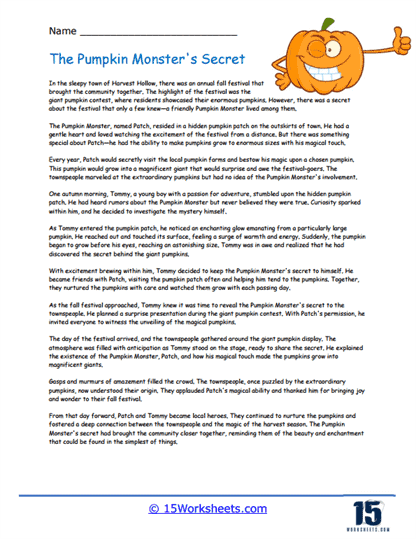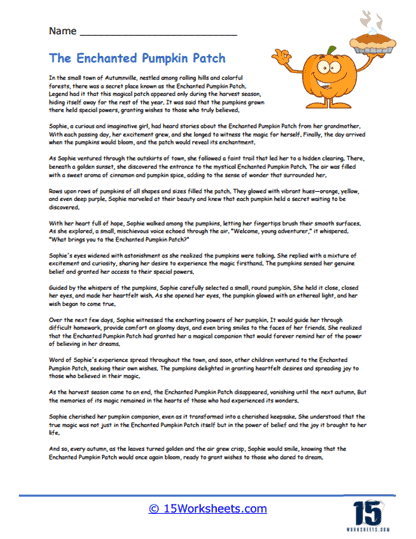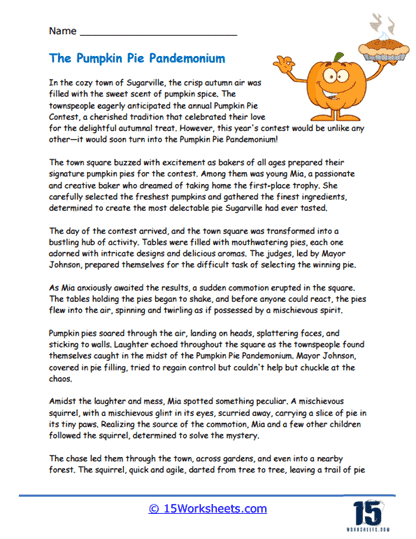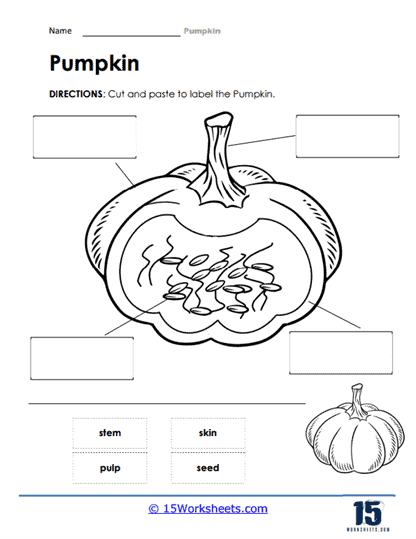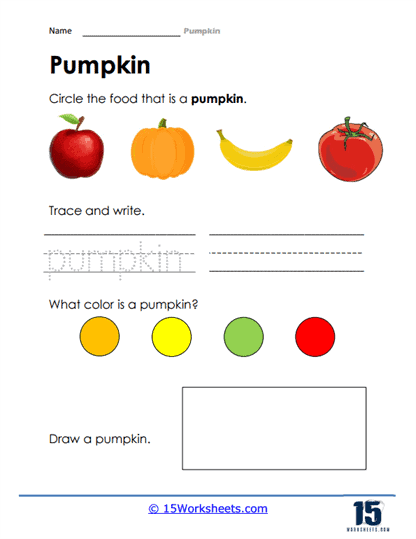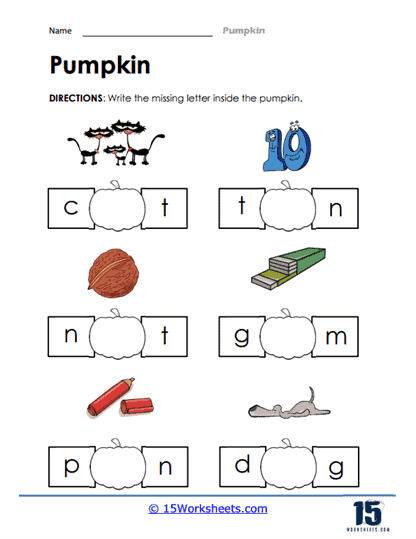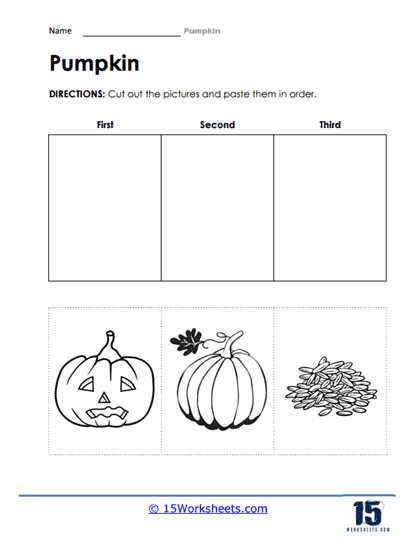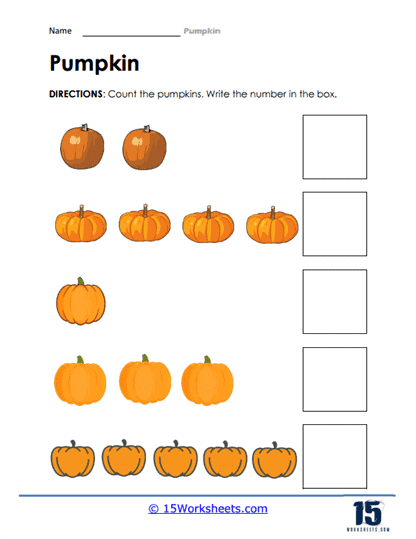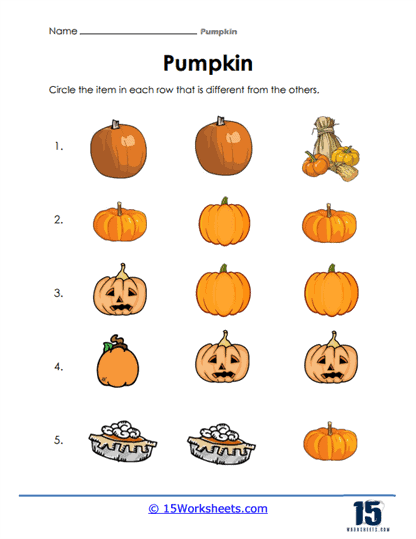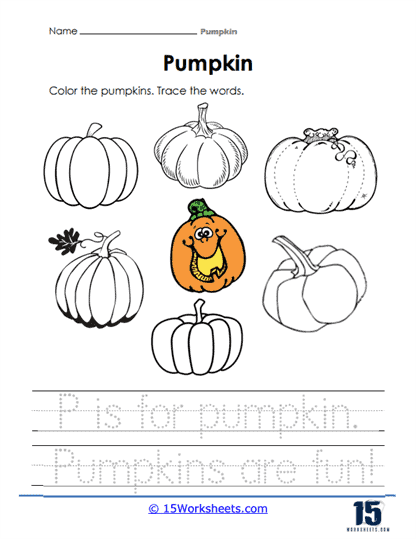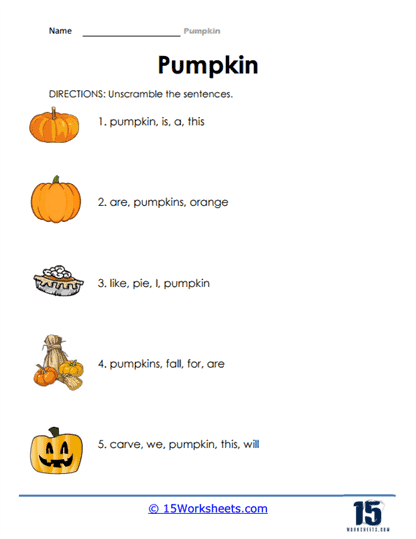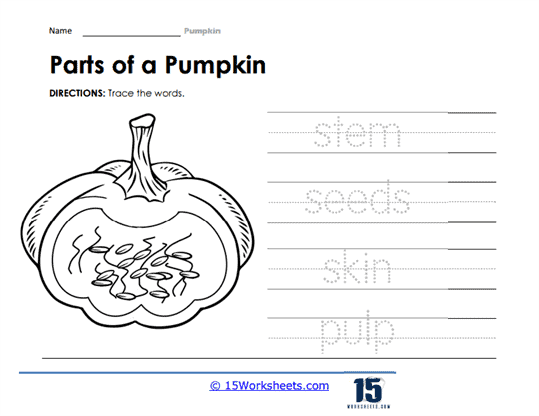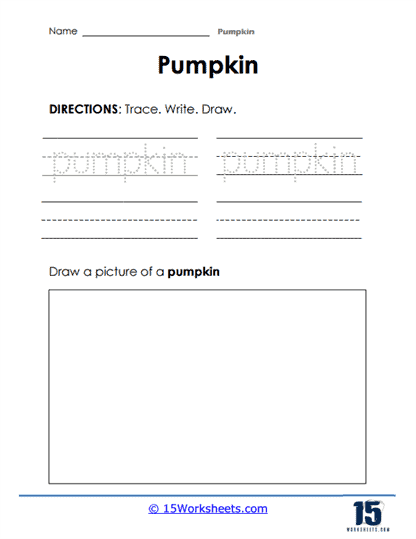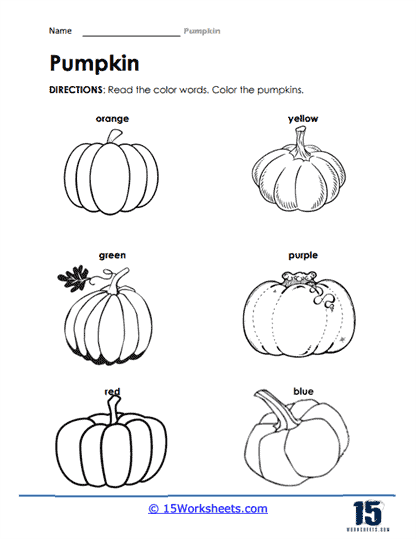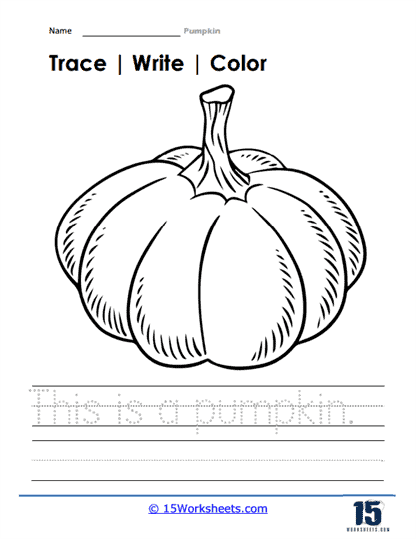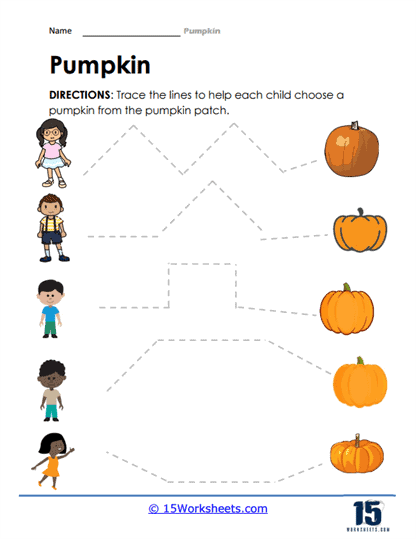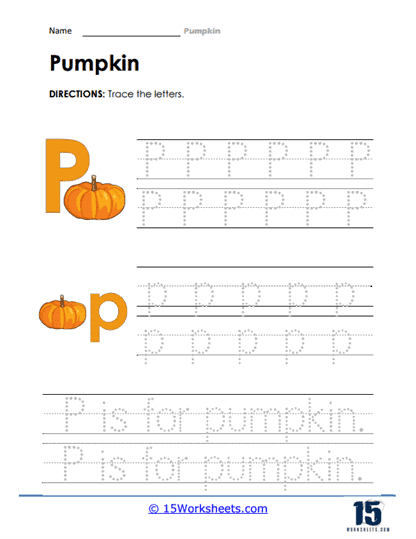Pumpkins Worksheets
All About These 15 Worksheets
This series of 15 worksheets is an engaging and educational resource designed to integrate pumpkin-themed exercises into various skill areas, including grammar, arithmetic, penmanship, vocabulary, fine motor skills, and creativity. These worksheets provide students with a fun and interactive opportunity to develop and reinforce essential academic and motor skills. By completing a variety of activities, students will deepen their understanding of grammar concepts, practice counting, enhance penmanship skills, expand vocabulary, improve fine motor skills, and engage in creative expression. Through these worksheets, students will:
- Identify the parts of a pumpkin, enriching their vocabulary;
- Practice tracing words and sentences, helping them improve penmanship;
- Showcase their creativity by drawing and coloring pictures of pumpkins;
- Write the missing letters in words and unscramble the word order in sentences to develop their vocabulary and grammar skills;
- Practice their knowledge on counting numbers;
- And trace different lines to develop fine motor skills.
This series provides an immersive and educational resource for students to explore pumpkins while developing essential academic and motor skills. Through activities encompassing grammar, arithmetic, penmanship, vocabulary, fine motor skills, and creativity, they will deepen their understanding, foster critical thinking, and enhance various skill areas. In summary, these worksheets promote skill-building, engagement, and creative expression, inspiring students to learn and grow through the exciting theme of pumpkins.
How to Incorporate Pumpkins in Your Class
Incorporating pumpkins into classroom activities can be a fun and educational way to engage students, particularly during the fall season. Here are some ideas for using pumpkins in class across various subjects:
Math
Estimation – Have students estimate the weight, circumference, and height of a pumpkin and then measure the actual dimensions to compare their estimations.
Counting seeds – After cutting open a pumpkin, have students count the seeds, and then use the seeds for various counting, sorting, or grouping activities.
Pumpkin geometry – Teach basic geometry concepts such as shape, size, symmetry, and surface area using pumpkins.
Science
Life cycle – Discuss the life cycle of a pumpkin, from seed to mature fruit, and have students create a visual representation or a written report.
Pumpkin dissection – Open a pumpkin and explore its parts, such as the skin, flesh, and seeds, discussing their functions and properties.
Decomposition – Document the process of decomposition by observing a pumpkin over time and discussing the factors that affect decay.
Language Arts
Creative writing – Use pumpkins as a prompt for creative writing assignments, such as stories, poems, or journal entries about pumpkins or fall-related themes.
Descriptive writing – Have students practice using adjectives and descriptive language by writing a detailed description of a pumpkin.
Reading – Read age-appropriate books or stories featuring pumpkins, such as “The Legend of Sleepy Hollow” or “It’s the Great Pumpkin, Charlie Brown.”
Art
Pumpkin painting or decorating – Provide students with paint, markers, or other materials to decorate pumpkins and encourage creativity.
Pumpkin carving – Teach students about the history and cultural significance of jack-o’-lanterns and guide them in carving their pumpkins, with adult supervision.
Collages or drawings – Have students create pumpkin-themed collages, drawings, or other artwork.
Social Studies
History and culture – Discuss the history of pumpkins and their cultural significance in various societies, such as their use in Halloween traditions or the role of pumpkins in Native American agriculture.
Geography – Explore the regions where pumpkins are grown, and discuss the environmental factors that affect their growth.
Cooking and nutrition:
Cooking activities – Use pumpkins to create simple recipes in class, such as pumpkin bread, roasted pumpkin seeds, or pumpkin soup.
Nutrition – Teach students about the nutritional benefits of pumpkins and the importance of including fruits and vegetables in their diet.
These ideas can be adapted to different age groups and subjects to create engaging, pumpkin-themed classroom activities that promote learning and celebrate the fall season.

